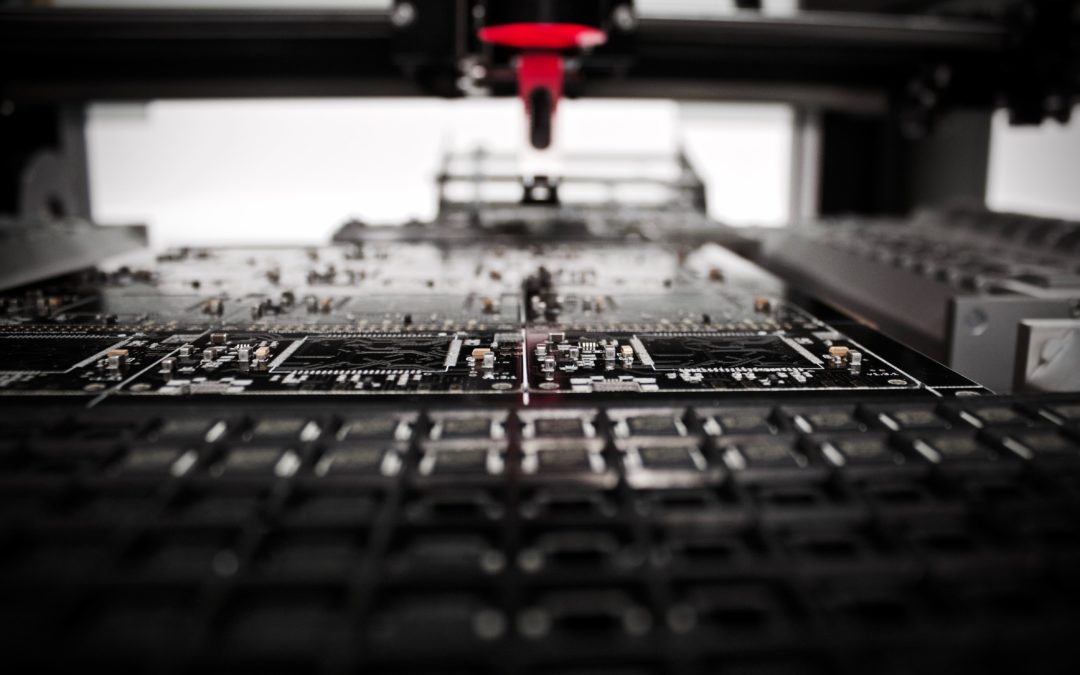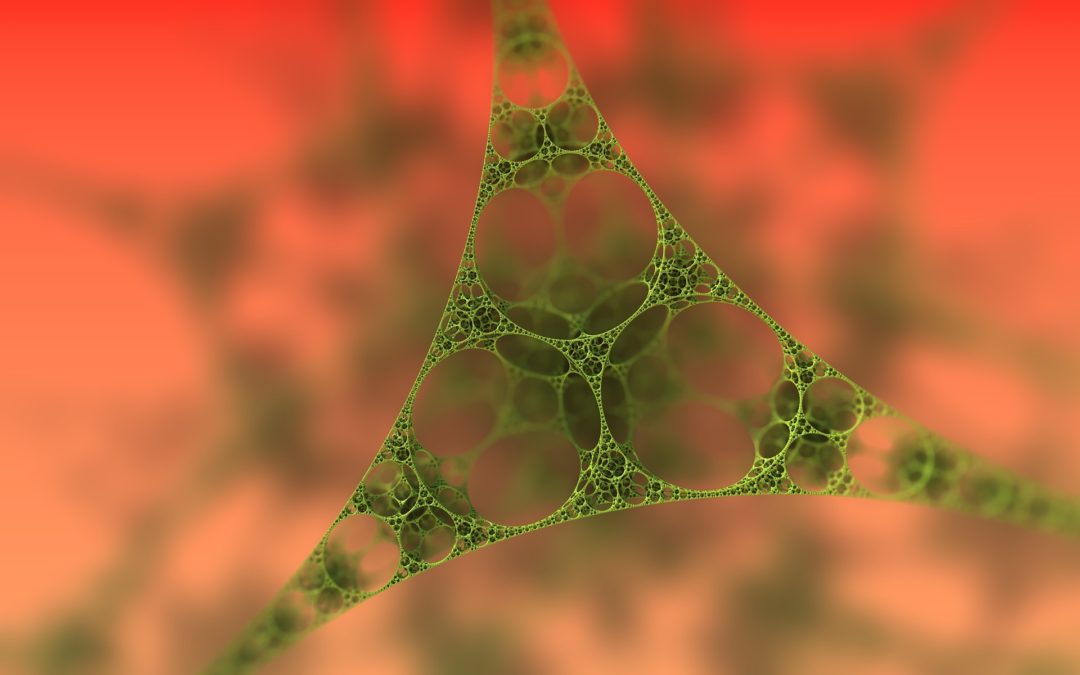
Graphene as a water filter
One of the standout qualities of the well-known “wonder material” graphene is its potentially massive environmental impact. Of the different effects it is purported to have on the environment, an important one is its capacity for effective water filtration and desalination. Creating potable water has a number of benefits, ranging from medical, pharmacological, chemical, and industrial applications.
Graphene improves the water purification process as a membrane. The material is hydrophilic, meaning that it attracts water. So when microscopic holes are made in the material, it creates a membrane that allows water molecules to flow through, while blocking contaminants, gases, and solvents.
Scientists at the CSIRO, an Australian research center, recently utilized such a method to create a graphene water filter membrane. Conventional water filter membranes are made from polymers, which unfortunately means that they are unable to handle a diverse mix of contaminants. Because of its capabilities, thin-layer graphene can allow water to pass through microscopic channels in its surface. This kind of membrane is able to filter the liquid faster than conventional products and prevents the contaminants that are blocked from clogging the surface.
Despite graphene’s improved abilities at keeping contaminants from clogging the membrane, a buildup can still occur. This is why researchers at Washington University in St. Louis have not just created a similarly functioning graphene water filter membrane, but have also enlisted the help of a “traitor” bacteria to form the membrane, and uses light to destroy the clumped contaminants near the surface of the filter. The scientists took the bacteria Gluconacetobacter hansenii and fed it a sugary substance, causing it to produce cellulose nanofibers. The researchers then added graphene oxide flakes, with add durability, stability, and ability to the newly-formed membrane, making it an effective water filter.
But Washington University scientists didn’t stop there — after filtration, they “reduced” the graphene oxide by removing the oxygen groups in the material. This causes it to become more reactive to light and absorbs it, which in turn heats up the membrane, killing the bacteria that created it, along with another of the other contaminants that have been caught in the membrane. The now-sterilized membrane is able to filter water twice as fast as existing membranes under high pressure.
The appeal of these new graphene water filters is that they are far more energy-efficient, lightweight, and environmentally friendly than existing filters, while also being more effective. Another important benefit of these newer graphene water filters is that water will not need chlorination to be purified. Typically, chlorine is used to destroy toxic materials in water, but with the pinpoint efficiency of graphene, such contaminants can be taken care of in other ways.
Graphene’s application spans a seemingly endless amount of technology areas, and looks to not only significantly advance our capabilities, but provide environmental and health benefits for the whole world. With graphene water filters, it can become possible to further the mission of providing everyone with clean drinking water in cost-efficient and functionally effective ways.

Graphene robots
While our initial conception of robots typically involves humanistic features, advancements in nanotechnology are showing us that robots can take all kinds of forms. This includes microscopic machines that have the potential to positively impact fields like healthcare and medicine, where they can help us get a closer look at the way the human anatomy works and solve a wide variety of medical issues.
At MIT, engineers have managed to create nanotech that can do just that. But the miniscule robots, which range from 10 micrometers across (the size of a red blood cell) to 10 times that size, need the strength to withstand the conditions within cells and the body, particularly for the water that electronics will be constantly exposed to. That’s where graphene comes in.
Previous iterations of the experimental robots were assembled individually. Graphene helped the researchers come up with a more efficient manufacturing process called “autoperforation.” For this particular device, graphene is used as a protective shell that will allow these microscopic robots to withstand the conditions within cells and the body.
To initially construct the robot, the electronics are encased in a polymer material that then form tiny semiconductor dots, which are laid on top a layer of graphene. Another layer of graphene is placed over the dots, and as it drapes over the devices, lines of strain begin to appear. The MIT scientists compared this reaction to that of a tablecloth on the surface of a circular table — eventually, it would create an indent around the microscopic robots.
This is when graphene starts to show off its capabilities. After everything is in place, the graphene is stressed to the point of fracture. But instead of randomly breaking off like other materials might, graphene breaks at the strain points of each electronic dot, and the edges of the two outer graphene layers stick together, creating fully-covered “syncells,” as the MIT engineers dubbed them. Graphene is highly durable and exhibits water-resistant traits, meaning that the casing for the electronic nano-robot will keep it working in harsh conditions.
According to Professor Michael Strano, the syncells “start to look and behave like a living biological cell. In fact, under a microscope, you could probably convince most people that it is a cell.”
In addition, the discovery of graphene’s controlled fracturing means that these robots could viably be mass produced. As syncell development continues and it becomes more complex and capable, graphene will be there to help create these machines at a large scale.
The use of graphene in creating microscopic robots to monitor and eventually correct health issues opens up a whole new realm of possibility for nanotechnology. In addition to its durability, graphene is a great conductor of electricity and heat, meaning that it could provide not only protection for robotics and nanotechnology, but would also enhance their their technological capabilities. With graphene, we could begin to see a revolution in robotics, particular regarding nanotechnology for healthcare and medical needs.

Graphene and tissue engineering
The breakthrough medical technology of organ transplants on the human body is nothing short of miraculous and has saved and improved countless lives — but not without a price. The transplant process is messy and prolonged: the patient must wait for a matching organ to become available, then wait for it to be transported, and undergo a complicated and risky surgery, only to simply hope that their body doesn’t reject it. How can this process be improved?
The answer may be in the material called graphene, discovered in 2004 by two researchers at the University of Manchester. Some of graphene’s properties include a large surface area, high electrical and thermal conductivity, unmatched strength, ability to combine with other substances, ease in mass production, and flexibility. These characteristics and many more make it an ideal pairing with stem cells used in tissue regeneration, specifically for organs.
Graphene’s discovery showed that it has excellent physicochemical properties and a unique two-dimensional planar structure. Therefore, when used in stem cells, graphene oxide functions as scaffolding for their buildup. This ability earned it a label of the “next generation” of nanomaterials for stem cell control. Stem cells have shown to grow faster and better with the help of graphene-based nanomaterials. Therefore, using graphene could be just what organ cells need to reproduce more efficiently.
Stem cells can help various bodily tissues repair themselves. The use of graphene in stem cell regeneration could bypass many of the current requirements for organ transplants. Therefore, using graphene to regenerate tissue can be the golden ticket for improved organ replacements without another person dying. The question is, how can this be done sooner rather than later?
Though the discovery of graphene in tissue engineering has enormous potential, there is a long road before it is mainstream. A primary example is the use of 3D printers for graphene tissue cells. 3D printers have entered the market and are already helping advance medical research. However, using them to print organ cells has downfalls yet to be solved. Organ cells from 3D printers tend to die sooner due to lack of nutrients to the center of the organ and its cells. Other challenges to graphene’s regular use include safety regulations and costs.
The road is long before graphene completely transforms modern tissue engineering, but there are daily advances that ensure its future success. 3D printers can now produce blood vessels, which helps solve the problem of nutrient delivery to outermost parts of the organ. As a result, the organ lives longer. It’s already being used in biological cases such as gene and drug deliveries and cancer therapy.
When researchers find the perfect mixture of stem cells and graphene production, the field of regenerative medicine can leap forward. Its potential is unlimited to save and improve lives for those with organ transplants. That’s just the beginning of how graphene can elevate modern medicine, and the world at large.

Graphene can put the G in 5G
Telecommunications is a rapidly advancing technology. Keeping it up to speed, literally and figuratively, requires enormous resources and time. What if there were a way to expedite the process? Soon, this may be a reality, thanks to graphene.
The wonder material was officially discovered in 2004 by two researchers at the University of Manchester, which won them a Nobel prize. The material is formed of a single layer of carbon atoms in a hexagon shape. It is stronger than steel and thinner than a human hair, giving it superpower qualities that could replace many materials we currently use in daily life. It has already begun to impact farming, photodetection, water purification, solar panels, medical diagnostics, and more. For telecommunications, graphene may be able to replace the fiber-optic cable, speeding up communications and making them more reliable in the long term. How can this be done? By combining graphene with 5G.
5G performance has the capability for extremely high amounts of data, speed, and connectivity across devices. All the while, it reduces energy use, costs, and delays. Since the introduction of the mobile phone, there have been many iterations of performance systems. 2G, 3G, and 4G were once revolutionary for wireless communication. Now, 5G is changing the game altogether. 5G can be put to use in everything from virtual and augmented reality for live broadcasting, automotive advancements, manufacturing, healthcare, artificial intelligence, and smart cities, to name a few.
Communications of the future may be faster and easier than ever, as long as 5G works seamlessly, and graphene in its monolayer form can give 5G what it needs. Research is underway to see how graphene’s high conductivity and flexible monolayer can support the development of 5G wireless technology.
In 2017, a team at Sweden’s Chalmers University made a breakthrough in this research. When they combined terahertz detection with flexible graphene, a 5G mobile device controlled the Internet of Things (IoT). With progress like this, the future of electronic and optoelectronic technologies is bright thanks to the combination of graphene and 5G.
It is no wonder that mobile companies are perking up at the prospect of combining graphene with 5G. It can speed up their transmission of data much more efficiently than silicon. At some point, if things keep going in the direction they are, graphene will be cheaper than silicon too.
While the promise of graphene and 5G is heartening, there is a long way to go before it is mainstream in the manufacturing world. Graphene’s newness in the technology world makes more testing a necessity. Industry leaders are skeptical as to when it will make its official debut, but the need for 5G makes graphene’s potential more exciting than ever. With the right resources and work, it’s only a matter of time before we can benefit from graphene’s incorporation into 5G.

Do we need graphene caulking? The answer might surprise you.
Technology is advancing at a rapid rate so it’s no surprise that electronic devices like computers and cell phones are expected to evolve beyond our wildest dreams in the coming years. The recent discovery and subsequent research on graphene, a single layer of graphite that is extremely thin and incredibly durable, is expected to make a significant impact on tech items in the very near future. What’s surprising, however, is that it is also expected to impact a wide variety of other materials across various industries and applications. Incorporating graphene into home improvement and building materials, like caulk, could drastically improve their performance.
Caulk is typically composed in compound form with a single, active ingredient. The most common types are made of silicone, polyurethane, or latex. Each of these materials has a redeeming property that is ideally suited for standard caulk applications. Silicone is flexible, polyurethane is effective throughout a diverse temperature range, and latex is remarkably easy to work with when wet. Graphene has the potential to strengthen these positive properties when used in conjunction with the original material, but it also possesses many of them on its own.
One of the primary functions of caulk is to prevent the permeation of substances. It essentially acts as a barrier, keeping liquids out of places that should remain dry. Research published in the 2012 issue of Environmental Science & Technology showed that graphene oxide proved an effective barrier for both liquid and gas permeants. The substance maintains its flexibility while markedly improving the strength and impermeability of various environmental barriers already in existence. When added to silicone rubber, for example, graphene nanoplatelets were able to maintain the strength, impermeability, and flexibility of the compound in temperatures up to 250 degrees Celcius.
Another caulk-conducive property of graphene is its exceptional absorption of UV light in certain forms. Because caulk is often used to seal areas that are vulnerable to sunlight, it makes sense to combine it with a material that helps to maintain stability during UV exposure. Thermally exfoliated graphite oxides, a specific type of graphene, has been shown to not only absorb UV light but also protect from UV radiation. The additional stability could lengthen the lifespan of caulk in outdoor applications.
As if strength, flexibility, impermeability, and an impressive level of UV light absorption wasn’t enough, some studies report that graphene is able to seal holes…in itself. Graphene is a single sheet layer of graphite, which is an allotrope of Carbon. This means that graphene is basically a sheet layer of carbon molecules one-layer thick. When the sheet is ruptured — a difficult feat given graphene’s immense strength — the undamaged molecules latch on to any carbon atoms nearby, thus restoring the sheet to its original state. If researchers can find a way to incorporate this particular graphene quality into the caulk compounds, the resulting seals would be something akin to a super barrier!
While the idea of a super caulk is appealing, much of the material applications research for graphene is still in progress. Graphene has all the right properties to create a superior caulk, it’s now up to researchers to incorporate those properties into a caulking compound that works.

Want your computer to be more durable and flexible? Graphene can help.
Computers have come a long way since being introduced in the 1940s. The very first computer took up about 1,800 square feet and weighed nearly 50 tons. Now, they are small enough to take anywhere and with even more capabilities. They’ve expanded into phones, tablets, and other electronic devices that we rely on for daily life.
Electronic devices with flexible displays for healthcare, driving, and other everyday uses are becoming more and more in demand. It is challenging to have those devices also be transparent, stretchable, and lightweight while keeping their thermal, environmental, and mechanical capabilities the same. Lighter and more flexible computers often sacrifice durability. Likewise, stronger ones sacrifice portability. Combining both into one perfect device is yet to be done.
The solution may lie in graphene. This relatively new material was discovered in 2004, won its discoverers a Nobel Prize in 2010, and is now beginning to change the world. Graphene is made from carbon and forms a hexagonal shape, making it thinner than a human hair but stronger than steel. More qualities make it a frontrunner in replacing other substances in daily life like plastic, certain types of metal, and many construction materials.
Graphene’s conductivity makes it a prime contender for building electronic devices. Graphene is capable of 10 times more heat than copper, and can conduct 250 times more electricity than silicon. If graphene replaced silicon in computers, the processors would use less power and run about 1,000 times faster. On top of that, graphene is over 200 times stronger than steel — meaning that if you drop a graphene-made laptop, it will remain virtually untouched. The material has also exhibited water resistant traits, meaning that a graphene-based electronic device would also be protected from the elements.
Flexibility is another of graphene’s advantages when used for creating computers. South Korean scientists at Yonsei University demonstrated an “entangled graphene mesh network” (EGMN) that is highly stretchable and stable under harsh conditions. Graphene is placed on a copper base, chemical vapor deposition is used to immerse it into an etchant solution. Then, small holes form, allowing it to crumble, wrinkle and bend. To further graphene’s stretching capabilities, the solution’s EGMNs get transferred into materials like polyimide, stretchable latex, and silicon dioxide. The final substance is bendable and able to be applied to engineering various forms of technology.
Though graphene has tremendous capabilities for the digital world, it has obstacles to overcome before being accepted into mainstream society. Graphene’s high electric conductivity is both its greatest strength and weakness, and its lack of band gap means it cannot control the flow of electricity to its processors. Before graphene can address issues of durability and flexibility, we will need to find solutions for its various weaknesses.
Despite setbacks, developments in graphene are making strides every day. Researchers at the Catalan Institute of Nanoscience and Nanotechnology have developed a graphene-like substance with silicon’s band gap, bringing graphene closer to being used in electronic products. The computer’s journey over the past century is impressive. With graphene’s help, it is sure to make more strides beyond our wildest imagination. Watch closely for graphene to transform how we use technology in the years to come.

Move over Kevlar. Graphene is the future of body armor.
When it comes to protection, Kevlar has long been the standard for body armor. The heat-resistant synthetic fiber was discovered in 1965, and it’s high tensile strength-to-weight ratio makes it five times stronger than steel. It has many uses, but its most well-known application is in body armor, where it has been essential in bulletproofing soldiers, law enforcement, and others in security-based professions. And yet, Kevlar is only a stepping stone compared to the capabilities offered by graphene, which could take body armor to new level of protectiveness.
Graphene’s major advantage over Kevlar is that it is 200 times stronger than steel, a substantial increase in strength over the popular body armor material. Not only that, but it is lightweight: graphene is made up of a single layer of carbon atoms formed together in a honeycomb lattice-like formation. The single layer means that graphene is one of the thinnest materials in the world. Graphene is not only strong, but its thin and flexible, making it much more versatile than Kevlar.
Researchers have not let graphene’s protective capabilities go unnoticed. Experiments at the City University of New York demonstrated a taste of how graphene can revolutionize body protection. They created a diamene (two layer) graphene foil that was so strong even a diamond tip was unable to perforate the material. Two atomic layers of graphene is still thousands of times thinner than even a single hair, but features such protective strength. This new form of graphene could act as flexible protective coatings to be placed on top of body armor, further increasing its strength. Interestingly, the experiments discovered that this ultra-hardening effect only occurs when two layers of graphene are used, and extra layers are shown to lessen the material’s effectiveness. Nevertheless, the defensive capabilities of the two layer graphene coating is remarkable.
In other experiments, there are some who are also attempting to improve body armor by combining graphene with other materials in order to utilize its capabilities. Graphene’s full potential is difficult to bring out on its own. As a result, scientists have found a way around this by creating graphene composites that give us access to aspects of graphene’s properties. A research team at Imperial College created a company, Synbiosys, to test compositing graphene with silk to create an extremely lightweight, flexible and extremely strong material that can be used in body armor. Their tests have shown great promise: they have begun to successfully create the composite material and continue to develop prototypes for real-life application.
Graphene is a tricky material. For one thing, it is extremely difficult to mass produce, making it hard to foresee the widespread use of graphene in body armor. In addition, we have yet to unlock all of the material’s secrets. For instance, why does graphene get weaker when adding more layers? Before graphene can change body armor and other other products for the better, it has a number of challenges to overcome.
But scientists and researchers have already begun to see the fruits of their hard work begin to pay off, and we are continually making advancements in graphene use. The diamene graphene foil, graphene and silk composite, and the numerous recent achievements in graphene research prove that we are not far off from a graphene-based world. For body armor, this represents greater safety and comfort for those who face danger in the line of duty, a worthy advancement for humankind.

Graphene can reduce concrete waste
Since ancient Rome, concrete has made up the literal building blocks of society. Producing it requires pulling natural resources such as gravel, sand, limestone, and other raw materials. In recent years, the rapid increase in construction has required more concrete, taking a toll on the environment. With no signs of slowing down, the question remains how construction can continue its upward trajectory while preserving the planet.
However, graphene could very well serve as a supplement for concrete, substantially reducing the amount of waste concrete produces. A single layer of carbon atoms formed in a hexagonal lattice, graphene is stronger than steel, extremely flexible, and one of the thinnest materials in existence. These properties and more make it an exciting contender for concrete production, and could provide a strong solution to society’s challenges.
Each year, concrete’s production takes from billions of tons of gravel and sand from rivers and beaches. When these environments are stripped (often illegally), they can change irreparably. Water flow can become faster, flooding into farmlands and cities. It also makes beach communities more likely to experience storm damage without sand as its absorption for heavy rain. Climate change increases this risk. Studies are showing that we are using sediment faster than nature is providing it. The need for a solution has never been more urgent.
Researchers at Exeter University are experimenting with adding graphene to concrete. The result is a material that is four times more water resistant than regular concrete. Its water resistance allows for construction in normally hard-to-reach areas. Concrete made from graphene is twice as strong as regular concrete. Its increased durability would make future buildings more resistant to earthquakes and other strains. While using graphene, raw materials needed to make concrete are decreased by about 50%.
Using graphene in concrete can also open up doors for additional nanomaterials to be included in construction, leading to more innovation. When structures are more stable with graphene concrete, greenhouse gas emissions are reduced, ultimately helping to curb climate change.
Though the possibilities for graphene in concrete are exciting as they are necessary, implementing changes will likely not happen fast. The construction industry is the largest consumer of natural resources, so changing its ways will require time and resources on both the state and local level. Graphene in concrete could reduce needed raw materials by up to 40%. Relying on graphene concrete would lessen the temptation for contractors to cut corners, making for safer buildings.
Graphene is just one of several ways to reduce the heavy reliance on natural resources for concrete. Another way is through 3D printing. With continued research and community engagement, the future for concrete looks brighter thanks to science and technology. Perhaps in the future, we could see graphene replace concrete entirely.

Graphene fashions
As scientists continue to research how to viably integrate graphene technology into everyday products, we are beginning to see how the wonder material might affect particular industries. One such area that graphene is beginning to enter is that of fashion and clothing, and its incorporation could lead to stronger insulation and better protection against the elements, all the while being more comfortable and breathable than any other conventional textile.
Clothing company Volleback has developed one of the first graphene jackets. It took years of research for the founders, working closely with the same material scientists who developed Michael Phelps’ record-breaking Olympic swimsuit.
To develop the jacket, graphene nanoplatelets are created and then blended with polyurethane to create a graphene membrane, which is what makes up one side of the jacket. This membrane is then bonded to nylon, completing the jacket. Not only does the graphene membrane itself contain impressive qualities, but it also strengthens the nylon’s properties. This seems to be the right step for Volleback, as most working graphene products are achieved through compositing graphene with other materials.
The graphene-formed outerwear is reversible, and can have different effects depending on which way the graphene is facing. When facing outward, the graphene membrane absorbs and stores heat from the sun. Since it retains that heat, reversing the graphene membrane will allow it to directly heat the wearer’s body. The jacket distributes heat evenly over the body and its even disperses body humidity. The jacket is considered bacteriostatic, hypoallergenic, anti-static, and certified as non-toxic, according to Volleback’s website. As people purchase and use the graphene jacket, Volleback’s founders hope that new applications of the graphene jacket can be uncovered, which will give them additional ways to improve their product.
But the graphene jacket isn’t the only form of fashion that has gotten attention. In particular, sportswear companies have had the most interest in the material. Its insulation and conductivity make it perfect for winter jackets or even t-shirts that can help athletes withstand the cold. Graphene-infused shoes are also being researched, and some claim that graphene can improve the durability of the rubber sole by 50%.
As is the case with fashion, graphene has also been utilized aesthetically, which just goes to show how universally appealing its wide array of qualities are. Fashion company CuteCircuit has developed the first graphene dress, using graphene composites to conduct low levels of electricity through the garment. It then uses graphene-enhanced sensors to detect breathing patterns, and LED lights change the dress’ color based on breathing patterns. Graphene’s appeal to fashion is a unique one, not only allowing for technological advancements, but aesthetic ones as well.
Graphene fashion, like any other field that is developing uses for the material, is still in its infancy. But the important thing is that scientists have already discovered that it is possible to use. The only obstacles to overcome include working out graphene’s kinks and finding a way to make it widely available so graphene products can be mass-produced for everyone to benefit from.

Graphene prosthetics and the cyberpunk future
Within science fiction, particularly the subgenre known as cyberpunk, humans augment themselves with various technological devices and prosthetics to enhance themselves beyond human capabilities, or to repair themselves in ways that perfectly replicate body functions. So how do modern prosthetics fare compared to the technological marvels of fiction? While we have made huge leaps forward in bionics and myoelectrics, we are not quite yet at the level of the cyberpunk future. But with graphene, we may just be able to get there. The material’s strength, light weight, and endless utility could lead to even more dramatic advancements in prosthetic technology.
In modern prosthetics, bionic limbs have done excellently in replicating movement and function of missing body parts for amputees, offering mostly full range of motion for legs, feet, arms, and hands. This can be contributed to the development of myoelectric sensors, which connect the artificial limb to the natural electrical processes generated by muscles in order to enable complex movement. Hand prosthetics in particular have made major advancements in replicating the intricate and specific motor functions of fingers.
Our advancements in prosthetics make it so that we can successfully regain lost function, but still lack meaningful tactile perception. While some might argue that the absence of pain is a benefit, the use of touch to perceive potentially harmful stimuli to the host would be a valuable addition to the features prosthetics provide, not to mention the emotional and psychological relief that may come with such upgrades to prosthetic tech.
This is where graphene can step in. Scientists have begun to use the wonder material to create a graphene-based skin for prosthetics. This e-dermis electrically stimulates the amputee’s nerves non-invasively through the skin, replicating the process of signal relaying that the brain utilizes in tactile feeling. In addition, graphene’s optical transparency allows for 98% of light to pass through it, making the perfect material to utilize solar energy to power these advanced prosthetics. Of course, pain is not the only feeling that this graphene skin would allow users to process, and it’s potential to make the feeling from phantom limbs a reality again is truly wondrous to behold.
Even more intricate, graphene can potentially be used to create small implants and internal prostheses that would be capable of correcting eyesight or hearing, to repair the body and help in overcoming degenerative diseases, or even help mend broken bones. Previously, silicon-based implants were too damaging to internal tissues if disturbed, and the conditions inside the body damaged the electronic components. However, graphene’s strength, being 200 times stronger than steel, and its flexibility make it much more durable. It is also possible to use graphene to create transistors that are gated by the natural fluids surrounding the implant. With graphene, the hyper-advanced technological developments of cyberpunk are closer than ever.
With graphene, prosthetics are on the cusp of reaching the technological heights of science fiction. Like with many graphene-based products, they are mostly in the testing and research phase, but it’s clear that the application of graphene can bring about a new era in the field of prosthetics and change countless lives.
